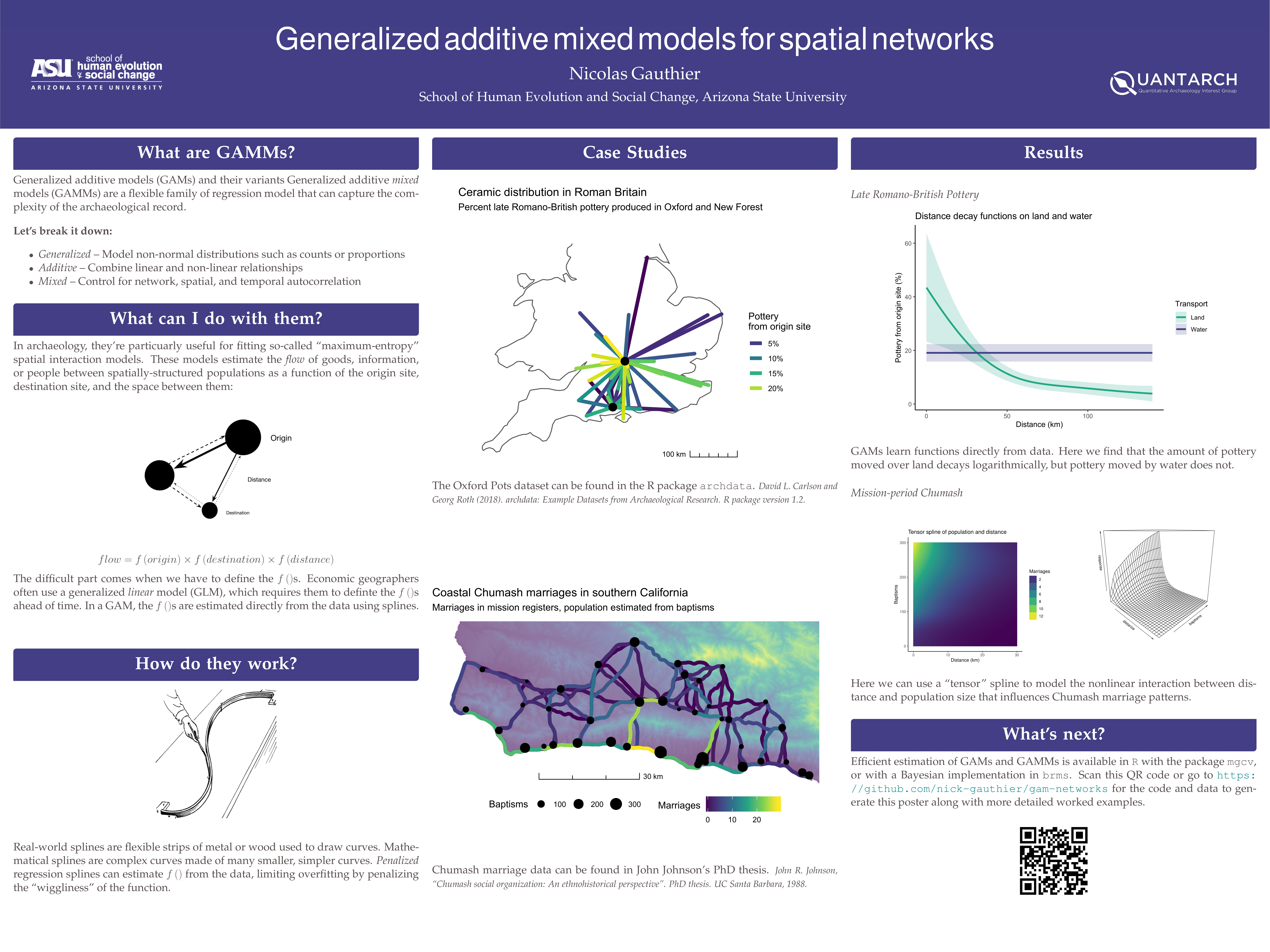
Abstract
Distance is a fundamental constraint on human social interaction. This basic principle motivates the use of spatial interaction models for estimating flows of people, information, and resources on spatial and social networks. These models have both valid dynamical and statistical interpretations, a key strength well supported by theory and data from geography, economics, ecology, and genetics. To date, archaeologists have primarily relied on the dynamical approach because the idiosyncrasies of archaeological data make the wholesale adoption of statistical approaches from other fields impractical. Here, I argue for the use of generalized additive mixed models (GAMMs) for statistical inference on interaction networks in archaeology. GAMMs are a flexible form of regression model well-matched to the complexities of the archaeological record, including non-normal distributions in the form of counts or proportions, non-independent observations with correlated errors, and non-linear functional relationships. Using two case studies – an ethnographic marriage network and an archaeological assemblage similarity network – I illustrate how this approach can lead to unbiased parameter estimates and more robust comparisons of competing hypotheses. I conclude by outlining how future empirical efforts can help to refine our thinking about past network dynamics and reveal cross-cultural regularities of human social interaction in the present day.